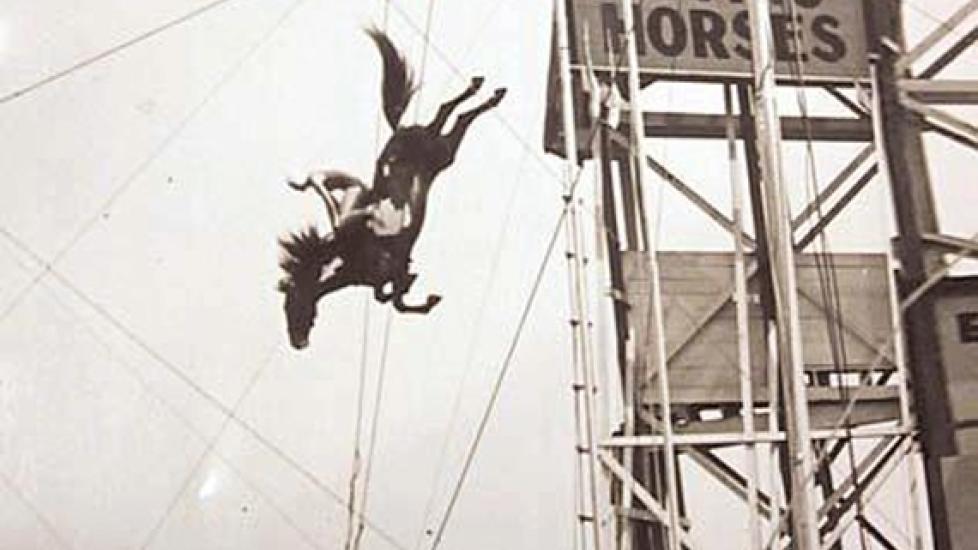The Incredible High-Diving Horses of Yesteryear
Although today’s post has nothing to do with veterinary medicine, I’d like to share an oddity in equestrian history that fits with the summertime mood. In the late 1800s, a traveling Wild West show run by a man named “Doc” Carver featured a diving horse act where a horse ran off an embankment or pier into a body of water.
There are a few different variations of how Carver came to this diving horse idea. Other parts of Carver’s biography are fuzzy as well, but include time spent training as a sharp shooter and taking part in the famous Buffalo Bill Wild West show. The most widely cited account of Carver’s equestrian ingenuity details how he jumped a horse off either an embankment or bridge in Nebraska into the river below. Soon, Carver’s business partner, Al Floyd Carver, built a mobile ramp and tower and the diving horse traveling show was born.
In an era rich with entertainment in the form of traveling sideshows and circuses, the diving horses were a big hit. Unique to be sure, these shows offered paying customers a small piece of everything you could want in entertainment: danger, suspense, and the appearance of the human-animal bond. In the early 1900s, Carver’s show became a permanent fixture at Atlantic City’s Steel Pier.
If this story sounds a little familiar to some of you, it might be because of a Disney film called Wild Hearts Can’t be Broken, released in 1991. This film chronicles the true story of a young girl named Sonora Webster, who was a rider in Carver’s show. Tragically, in 1931, Sonora was blinded after an accident on the pier caused her horse to dive unexpectedly off-balance. Sonora hit the water with her eyes open and the force of the impact detached her retinas. A story of perseverance, Sonora continued to dive blind in the act for another eleven years and married Carver’s business partner.
Carver’s act continued at the Steel Pier until the 1970s — a very respectable tenure for something born in the previous century. Pressure mounting from various animal welfare groups finally closed the show. Atlantic City attempted to resurrect the show again at Steel Pier a few years ago, but it was again halted on grounds of animal welfare.
Although Sonora always maintained their horses were treated humanely, one must wonder: Is it in a horse’s nature to willingly climb atop a forty foot structure and then leap into water below? Granted, it is not in a horse’s nature to allow a human on its back either, and yet we are able to quite easily train a horse to accept that. Is a horse trainable enough to willingly dive?
Accusations arose during the show’s timeline that cattle prods and other methods of force were used to force the horses up the ramp and then off the pier. However, even if these aren’t true, there were horses that died over the course of the show’s lifetime, either from injuries sustained during a last-minute panic prior to jumping into the water, or to drowning.
I bring up this niche of equestrian history not to be a downer and debate animal welfare, but to share a glimpse into the past. Horses have had such a huge impact on human development and entertainment over the millennia that I find it interesting when something rather unique — Diving horses? Who would’ve thought? — blips on the radar. Being a horse lover myself, I am continually amazed at what the equine species endures.

Dr. Anna O'Brien
Image: Archive image of a diving horse with human rider
